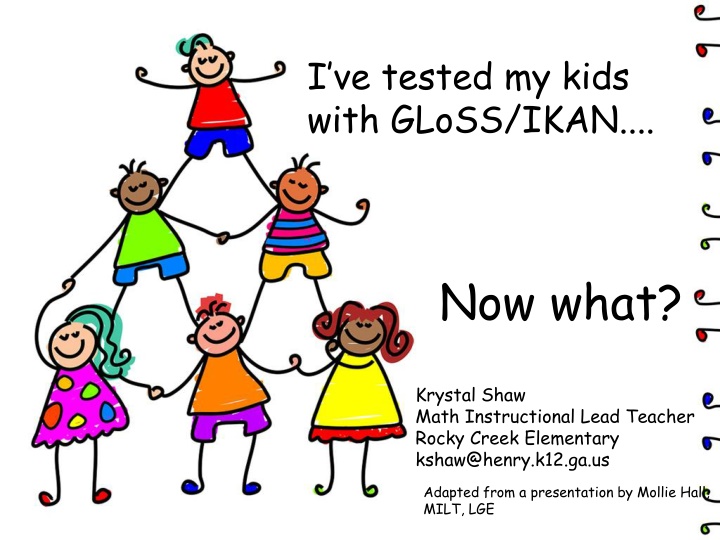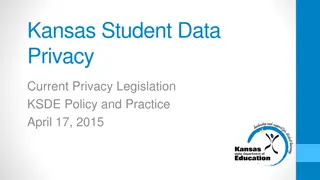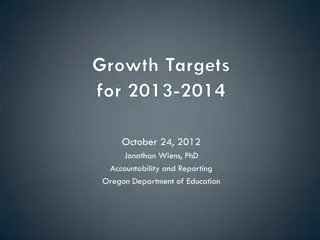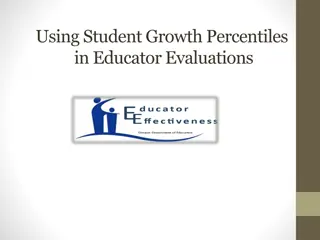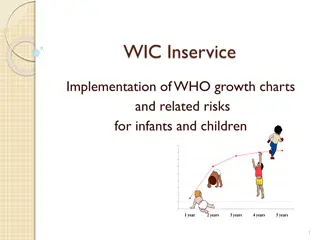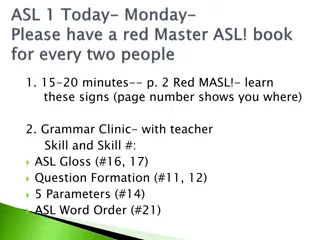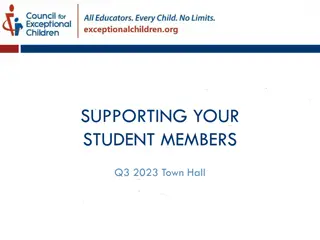Strategies for Analyzing GLoSS/IKAN Data and Supporting Student Growth
Explore key goals and standards for educators using GLoSS/IKAN assessments, from analyzing data to implementing differentiated instructions based on student needs. Discover essential strategies and tools to help students progress through various stages of learning in mathematics. Gain insights into benchmarking tied to Teacher Keys, student growth, and academic achievement. Delve into the CCGPS standards for Kindergarten to Fifth Grade in GLoSS/IKAN. Learn about the importance of IKAN Counting Interview for assessing number knowledge stage.
Download Presentation

Please find below an Image/Link to download the presentation.
The content on the website is provided AS IS for your information and personal use only. It may not be sold, licensed, or shared on other websites without obtaining consent from the author.If you encounter any issues during the download, it is possible that the publisher has removed the file from their server.
You are allowed to download the files provided on this website for personal or commercial use, subject to the condition that they are used lawfully. All files are the property of their respective owners.
The content on the website is provided AS IS for your information and personal use only. It may not be sold, licensed, or shared on other websites without obtaining consent from the author.
E N D
Presentation Transcript
Ive tested my kids with GLoSS/IKAN.... Now what? Krystal Shaw Math Instructional Lead Teacher Rocky Creek Elementary kshaw@henry.k12.ga.us Adapted from a presentation by Mollie Hall, MILT, LGE
Where are You? 1. I m lacing up. 2. I m out of the starting gate. 3. I m gaining speed. 4. I ve caught the runner s high!
TODAYS GOALS 1. How do I analyze the data provided by GLoSS/IKAN? 2. How do I expose students to appropriate strategies to help students grow from one stage to another between assessments? 3. What are the answers to the frequently asked questions that come up when administering this assessment?
TKES Standards 1. Professional Knowledge: The teacher demonstrates an understanding of the curriculum, subject content, pedagogical knowledge, and the needs of students by providing relevant learning experiences. 3. Instructional Strategies: The teacher promotes student learning by using research-based instructional strategies relevant to the content to engage students in active learning and to facilitate the students acquisition of key knowledge and skills. 4. Differentiated Instruction: The teacher challenges and supports each student s learning by providing appropriate content and developing skills which address individual learning differences.
For you: Benchmarking that is tied to Teacher Keys Student Growth and Academic Achievement: For teachers of tested subjects, this component consists of a student growth percentile/value-added measure. (CRCT scores for 4-5) For teachers of non-tested subjects, this component consists of GaDOE- approved Student Learning Objectives (SLO) utilizing district-determined achievement growth measures. (In Henry County, GLoSS/IKAN for K-3)
For your Students CCGPS Standards in GLoSS/IKAN Kindergarten MCCK.CC.1 - 4 MCCK.OA.1 - 3 MCCK.OA.5 MCCK.NBT.1 First Grade MCC1.OA.5 - 6 MCC1.NBT.1 MCC1.NBT.4 5 Second Grade MCC2.OA.1 - 2 MCC2.NBT.3 MCC2.NBT.5 9 Third Grade MCC3.NBT.1 3 MCC3.OA.5 MCC3.OA.7 MCC3.NF.1 3 Fourth Grade MCC4.OA.1 5 MCC4.NBT.1 MCC4.NBT.4 6 MCC4.NF.1 Fifth Grade MCC5.NBT.3 MCC5.NBT.5 7 MCC5.NF.1 - 7
How Do I Analyze The Data? Strategy Stage
IKAN Counting Interview Number Knowledge Stage
IKAN Written Part Number Knowledge Stage
Global Stage Be mindful that students strategy stages across the three domains may be out of phase. For example, a student might be at stage 5 for both the addition and subtraction and the proportions and ratios domains and at stage 6 for multiplication and division. This student understands how to derive multiplication facts but lacks the addition and subtraction strategies to do so efficiently and has insufficient knowledge to apply multiplicative thinking to fractions. Your initial focus is likely to be on number knowledge, addition, and subtraction, so assign the student to their stage for that domain.
Henry County Expectations Stage 3: Counting from one by Imaging Stage 4: Advanced Counting Stage 5: Early Additive All students must show growth from the beginning to the end of the year.
Henry County Expectations Stage 5/6: Early Additive Part Whole or Advanced Additive/Early Multiplicative Part-Whole Stage 6: Advanced Additive/Early Multiplicative Part-Whole Stage 6/7: Advanced Additive/Early Multiplicative Part-Whole All students must show growth from the beginning to the end of the year.
Goal #2 How do I expose students to appropriate strategies to help students grow from one stage to another between assessments?
Grouping options Most classes display a wide range of strategy stages. This can be managed in many ways, including: Putting together students from close strategy stages Cross-grouping between classes for a few students at the extreme ends of the range Using parent or teacher aide to help monitor group or independent work.
How do I teach the different stages?
Stages/Stage Names Stage 0 Emerging (EM) Stage 1 One to One Counting (1-1) Stage2 Counting From One on Materials (CA) Stage 3 Counting From One by Imaging (CAI) Stage 4 Advanced Counting (AC) Stage 5 Early Additive Part-Whole Thinking (EA) Stage 6 Advanced Additive Part- Whole Thinking (AA) Stage 7 Advanced Multiplicative Part Whole (AM) Stage 8 Advanced Proportional Part Whole (AP)
Lets Look at Some Activities Beep Hundred Board Snakes The Birthday Cake
Birthday Cakes Using Materials The four people at Carla s birthday will get one-quarter (one-fourth) of the cake each. Carla puts 16 candles on the cakes so that each person gets the same number of candles on their piece of cake. How many candles will each person get on their piece of cake?
Birthday Cakes Using Imaging Here is a piece of Randy s birthday cake. Each piece of cake has the same number of candles. How old is Randy? One piece of cake
Birthday Cakes Using Number Properties Two-thirds of the cake has eight candles on it. How many candles are on the whole cake? Three-quarters of the cake has nine candles on it. How many candles are on the whole cake?
We are Kindergarten, 1st and 2nd grade teachers .what does it matter? A good understanding of addition, subtraction, and place value is crucial for strategies in multiplication, division, fractions, algebra, and statistics. Students initially use counting to solve addition and subtraction problems. They then start to think strategically, first with smaller whole numbers, then with larger ones, and later with fractions, decimals, and integers. We are the foundation builders for our students.
Goal # 3 What are the answers to the frequently asked questions that come up when administering this assessment?
Frequently Asked Questions Math / IKAN/GLOSS Teacher Resources
3, 2, 1 3 things you learned today 2 things that connected for you 1 question you still have kshaw@henry.k12.ga.us
